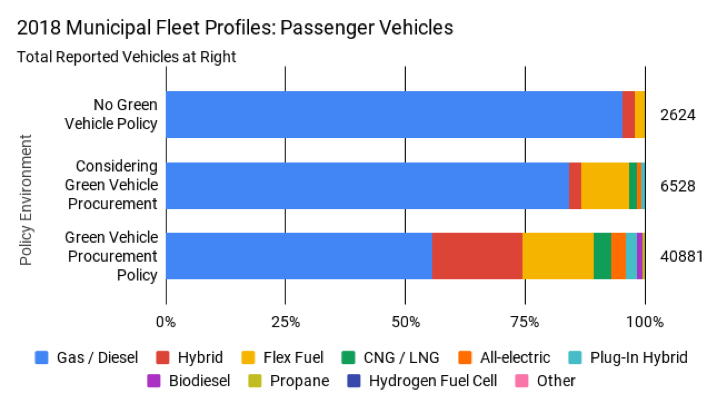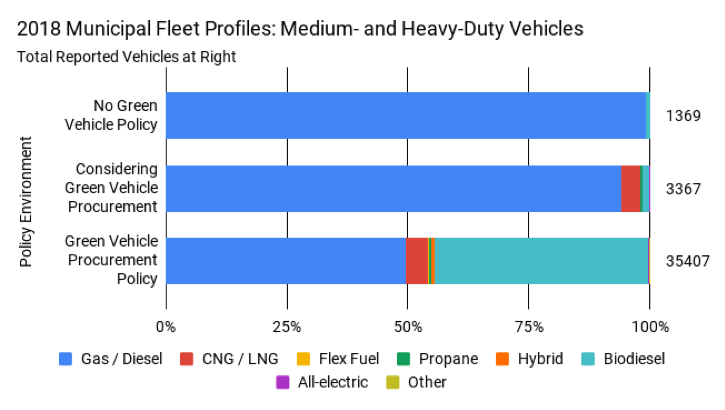The Intergovernmental Panel on Climate Change’s recent 1.5 Degree-C Special Report and the U.S. government’s Fourth National Climate Assessment clearly demonstrate the harsh reality that accelerated climate action is needed to avoid the worst effects of unchecked warming. Here in our own backyard, we must continue to take the steps we can to reduce our impacts. This charge is especially relevant in the transportation sector, which has become the largest source of U.S. greenhouse gas emissions (27 percent) and contributes a large portion of the country’s air pollution.
Many local governments would like to reverse this troubling trend. One strategy is to change the type of vehicles on the road, and although cities cannot determine the cars that people drive, they can take action and lead by example.
A recent survey of 156 cities conducted by C2ES and the U.S. Conference of Mayors (through the Alliance for a Sustainable Future) suggests that alternative fuel vehicles such as hybrids, biodiesel, and electric vehicles are becoming an increasingly attractive option for local government fleets. Of the 122,000 municipal fleet vehicles reported nationwide, 84 percent are owned by cities with a green vehicle procurement policy on the books.
But does having such a policy mean a city will follow through and buy green vehicles? The survey results suggest it might. Responding cities with green procurement policies have many more alternative fuel vehicles than their counterparts without such policies. Aggregated fleet profiles for municipal passenger cars and medium- and heavy-duty vehicles – the two largest vehicle classes for municipal fleets reported in the survey – are shown below.


